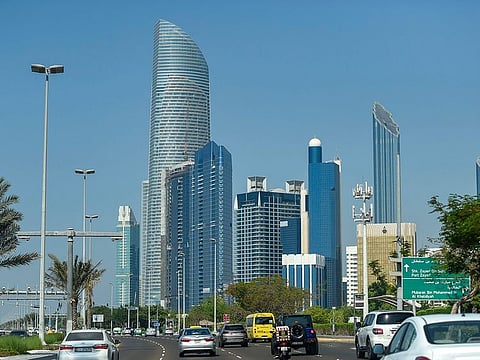International Monetary Fund more than doubles UAE’s 2021 GDP forecast to 3.1%
Global economy to grow 6 per cent 2021 compared to -3.3 per cent contraction in 2020

Also In This Package
Dubai: The International Monetary Fund has revised growth rates of GCC economies significantly upwards from its last update in October 2020.
In its latest World Economic Outlook, the IMF has forecast the UAE and Saudi Arabia to grow 3.1 per cent and 2.9 per cent in 2021 against estimated contractions of 5.9 per cent and 4.1 per cent. In its October 2020 report, it had forecast 1.3 per cent and 2.6 per cent growth for the UAE and Saudi Arabia.
Brighter outlook
While the latest World Economic Outlook of the IMF has kept its GDP growth projections for the Middle East and Central Asia largely unchanged, the GCC countries saw upward revisions for 2021. While Oman is projected to move out of recession this year with a 1.8 per cent GDP growth, Bahrain is projected to grow 3.3 per cent.
Kuwait is forecast to grow at the lowest rate in the GCC with 0.7 per cent; Qatar has a slightly better growth outlook at 2.4 per cent for 2021.
Positive, yet uncertain
After an estimated contraction of 3.3 per cent in 2020, the global economy is projected to grow at 6 per cent in 2021 and moderating to 4.4 per cent in 2022. The revised estimate of contraction for 2020 is 1.1 percentage points lower than projected in October, reflecting the higher-than-expected growth in the second-half of 2020 for most regions after lockdowns were eased.
The projections for 2021 and 2022 are 0.8 per cent and 0.2 per cent stronger than in the previous forecast, reflecting additional fiscal support in a few large economies and the anticipated vaccine-powered recovery.
“Nonetheless, the outlook presents daunting challenges related to divergences in the speed of recovery both across and within countries and the potential for persistent economic damage from the crisis,” said Gita Gopinath, Economic Counsellor and Director of Research.
Beyond 2022, global growth is projected to moderate to 3.3 per cent into the medium term. Despite the strong recovery expected this year, the IMF noted prospects remain highly uncertain one year into the pandemic. New virus mutations and the accumulating human toll raise concerns, even as growing vaccine coverage lifts sentiment.
“Thanks to unprecedented policy response, the COVID-19 recession is likely to leave smaller scars than the 2008 global financial crisis. However, emerging market economies and low-income developing countries have been hit harder and expected to suffer more significant medium-term losses,” said Gopinath.
Diverging trajectories
Economic recoveries are diverging across countries and sectors, reflecting variation in pandemic-induced disruptions and extent of policy support. Advanced economies are projected to grow 5.1 per cent compared to a 4.7 per cent contraction last year, with the US and Eurozone estimated to grow 6.4 per cent and 4.4 per cent.
The overall outlook for GDP growth have been revised upwards by 0.8 per cent compared to October's estimates.
For the Emerging and Developing Asia regional group, projections for 2021 have been revised up by 0.6 percentage point, reflecting a stronger recovery than initially expected after lockdowns were eased in some large countries (for example, India). However, still high COVID-19 caseloads in some - such as Indonesia and Malaysia - put a lid on prospects.
The IMF observed that global growth outlook depends not just on the outcome of the battle between the virus and vaccines, it also hinges on how effectively economic policies deployed under high uncertainty can limit lasting damage from this crisis.
Sign up for the Daily Briefing
Get the latest news and updates straight to your inbox









